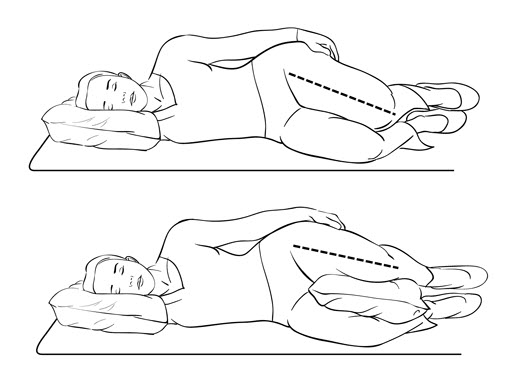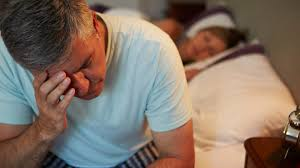Are you currently being kept up at night due to your pain? Night pain can be one of the most burdensome issues for patients when it comes to their pain as everyone wants to have a descent nights sleep. Pain can wake you up during the night or make it almost impossible to fall asleep in the first place. While you are asleep your body does not move very much, this can lead to stiffness and pain inside the joints.
Neck, Shoulder, Lower back and hip are the main areas affected by night pain. Maintaining a good alignment of the spine during sleep can help to reduce pressure being placed through these joints. Here are tips to help maintain a good sleep posture during sleep.
Sleep Positioning
The two most common sleep positions to help reduce pain for these joints would be
Lying on your side with pillow support between knees
If lying flat on your back feels uncomfortable, try sleeping onto your side however if the pain is localised to one side avoid time spent lying on that side.
- Allow your shoulder to contact the mattress, along with the rest of that side of your body.
- Place a pillow between your knees.
- If there’s a gap between your waist and the mattress, consider using a rolled-up towel under there for added support.
- If you find yourself tempted to always sleep on one side, attempt to change sides of the bed and see if this changes any preferences to sleeping one sided.

Lying flat on your back with pillow under knees
For some people, sleeping on their back may be the best position to relieve back pain. This position is also comfortable for hip and shoulder pain individuals it is avoids you placing weight through the sore joint.
- Lay flat on your back.
- Place a pillow underneath your knees and keep your spine neutral. The pillow is important — it works to keep that curve in your lower back.
- You may also place a small, rolled up towel under the small of your back for added support.
- For individuals with shoulder pain placing your arm on a pillow can help support the shoulder during sleep.

Stomach sleeping
Try to avoid sleeping on your stomach as this can cause increased discomfort in the neck as this sleep position moves the neck out of its normal alignment. If you find this position the most comfortable it may be best to ensure you sleep with a pillow under your abdomen and have little to no pillow under your neck. A towel may be good to use in this situation.
It is important to continue to experiment with different positions until you find something that works. It is also important to trial a few positions as you want to resist the urge to always sleep in the same position. This may result in muscle imbalances.
What to do if things are not changing?
If sleep position is not altering the pain, you may want to look at other changes such as mattress and pillows. A mattress that is too soft or hard can cause trigger pressure points. If not ready to commit to changing your mattress, starting with a foam pad to cover your mattress can help better distribute your weight across the bed.
Lifestyle changes
Changing some lifestyle factors can also help to reduce your night pain.
Good sleep hygiene
- Getting into a good sleep routine. This means planning on going to bed and waking up at the same time every day.
- Performing a good relaxation routine prior to sleeping for example mediation.
- Avoiding electronic usage close to bedtime.
- Avoiding consuming caffeine 5 or less hours prior to bedtime.

Weight distribution
- Avoid long periods of sitting with crossed legs
- Try not to stand with weight on one hip while pushing it out to the side ie. hip hitching.
- Maintaining a healthy weight
Exercise
- Avoid high intensity exercise prior to bedtime as it boosts your adrenaline.
- Low impact exercise: if pain is increasing due to loaded exercises you may want to try alternative exercise of lower load such as hydrotherapy, Pilates, walking and Yoga.

Our facilities offer both hydrotherapy and Pilates options if this is something that may interest you, please contact us regarding further information.
- Stretching the main muscles and joints around the site of pain can help to reduce stiffness and pain. Ensure you are not pulling too far into the stretch and stretches are held for 30 seconds or more.
For specific exercises and stretches tailored for your individual needs, book in to see one of our physiotherapists today.
Pain Management
- Regular massage to offload the muscular structures around your painful joints.
- Over the counter anti-inflammatories may be able to give you some relief prior to bed.
- For further information on pharmaceutical pain relief options please speak to your doctor.
Brooke Lavell
Physiotherapist.


